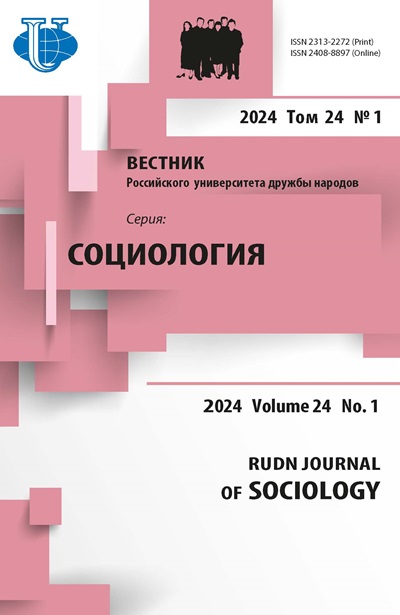Globalization of international migration: Social challenges and policy implication
- Authors: Aleshkovski IA1
-
Affiliations:
- Lomonosov Moscow State University
- Issue: Vol 17, No 2 (2017)
- Pages: 213-224
- Section: Contemporary society: the urgent issues and prospects for development
- URL: https://journals.rudn.ru/sociology/article/view/15918
- DOI: https://doi.org/10.22363/2313-2272-2017-17-2-213-224
Cite item
Full Text
Abstract
In the second half of the XX century, the humankind witnessed the insurmountable and irreversible power of globalization processes, which influence all spheres of social life and establish a global system of interdependency between countries and nations. Globalization within impetuous changes in global political, social and economic systems has determined dramatic shifts in the international migration processes that lead to the new stage of migration history. In nowadays globalized world, international migration has become a reality for almost all corners of the globe. The author considers features of the recent trends of international migration: the unprecedented growth of the international migration flows; the widening geography of international migration that involves nearly all countries of the world; qualitative changes in the structure of international migration flows; the key role of economic migration; the permanent growth and structural intricateness of irregular migration; the increasing scale and geographical widening of forced migration; the growing importance of international migration for the demographic development of the world, countries of both origin and destination. All these trends combined prove that the international migration patterns have become more complex. The author analyzes the legal framework of the international migration processes, and gives recommendations on the ways to improve the control and regulation of migration processes. Specific issues related to the social challenges of international migration are also discussed in the article.
About the authors
I A Aleshkovski
Lomonosov Moscow State University
Email: aleshkovski@yandex.ru
Leninskie Gory, 1, Moscow, 119991, Russia
References
- Aleshkovski I. International migration and globalization: Global trends and perspectives. Journal of Globalization Studies, 2016:2.
- Aleshkovski I. International migration management in the era of globalization. Globalistics and Globalization Studies: Big History & Global History. Volgograd; 2015.
- Compendium of Recommendations on International Migration and Development: The United Nations Development Agenda and the Global Commission on International Migration Compared. N.Y.: United Nations; 2006.
- Declaration of the High Level Dialogue on International Migration and Development. Resolution A/RES/68/4 adopted by the General Assembly on 3 October 2013. N.Y.: United Nations; 2013.
- Global Migration Governance. Ed by A. Betts. Oxford: Oxford University Press; 2011.
- Handbook on Establishing Effective Labour Migration Policies in Countries of Origin and Destination. Geneva: ОSCE, IOМ, ILO; 2006.
- ILO Global Estimates of Migrant Workers and Migrant Domestic Workers: Results and Methodology. Geneva: ILO; 2015.
- ILO Information System on International Labour Standards. http://www.ilo.org/dyn/normlex/en.
- International Migration Policies: Government Views and Priorities 2013. N.Y.: United Nations; 2013.
- Migration in an Interconnected World: New Directions for Action. Report of the Global Commission on International Migration. http://www.iom.int/jahia/webdav/site/myjahiasite/shared/ shared/mainsite/policy_and_research/gcim/GCIM_Report_Complete.pdf.
- Populations of Concern to UNHCR. N.Y.: UNHCR, 2016.
- Trends in International Migrant Stock: The 2015 Revision. N.Y.: United Nations, 2015.
- Trends in Total Migrant Stock: The 2005 Revision. N.Y.: United Nations; 2006.
- United Nations Treaty Collection. https://treaties.un.org/pages/Index.aspx.
- World Population Prospects: The 2015 Revision. N.Y.: United Nations; 2016.














